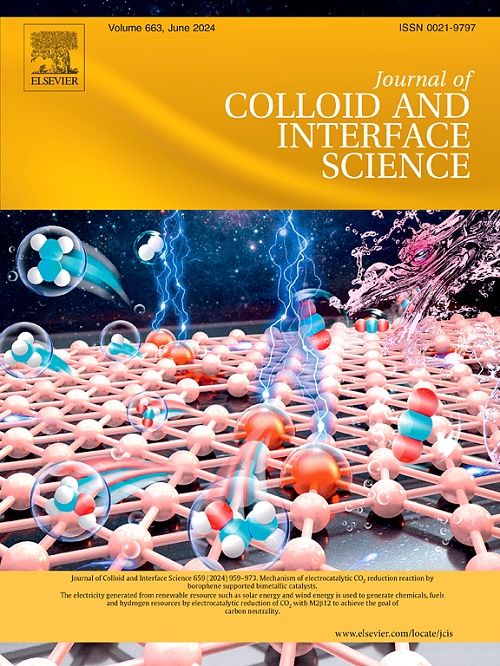Construction of 2D/2D α-Fe2O3/g-C3N4 Z-scheme photocatalysts with SnO2 as an energy platform for directed charge transfer in cascade heterojunction: Photocatalytic CO2 reduction and pollutant degradation
IF 9.4
1区 化学
Q1 CHEMISTRY, PHYSICAL
引用次数: 0
Abstract
Developing an efficient visible-light-driven photocatalysts for conversion of atmospheric CO2 into valuable fuels is a promising strategy to mitigate the escalating greenhouse gas, environmental, and energy crisis. This study presents an innovative design for a cascade Z-scheme comprising of dimensional matched SnO2-α-Fe2O3/g-C3N4 (SO-FO/CN) nanosheets heterojunction. In this configuration, SnO2 functions as an optimal energy platform that not only facilitates charge transfer and separation but also sustains sufficient thermodynamic energy for redox reactions and inhibits the undesired type-II charge transfer pathway. The optimized cascade Z-scheme exhibits a remarkable 20-fold improved photoactivity for CO2 conversion to CH4 and CO compared to bare g-C3N4 (CN). It also shows significantly improved photocatalytic activity for the degradation of toxic organic pollutants, 2,4-dichlorophenol (2,4-DCP) ∼6.6-fold and bisphenol A (BPA) ∼4.2-fold, respectively. The improved photocatalytic activity results from effective charge separation facilitated by the Z-scheme, along with a favorable energy platform and extended charge lifetime. This innovative strategy, which utilize an energy platform, presents a promising approach for designing an efficient Z-scheme heterojunction photocatalysts for solar-to-fuel conversion and pollutant degradation.

求助全文
约1分钟内获得全文
求助全文
来源期刊
CiteScore
16.10
自引率
7.10%
发文量
2568
审稿时长
2 months
期刊介绍:
The Journal of Colloid and Interface Science publishes original research findings on the fundamental principles of colloid and interface science, as well as innovative applications in various fields. The criteria for publication include impact, quality, novelty, and originality.
Emphasis:
The journal emphasizes fundamental scientific innovation within the following categories:
A.Colloidal Materials and Nanomaterials
B.Soft Colloidal and Self-Assembly Systems
C.Adsorption, Catalysis, and Electrochemistry
D.Interfacial Processes, Capillarity, and Wetting
E.Biomaterials and Nanomedicine
F.Energy Conversion and Storage, and Environmental Technologies

 求助内容:
求助内容: 应助结果提醒方式:
应助结果提醒方式:


